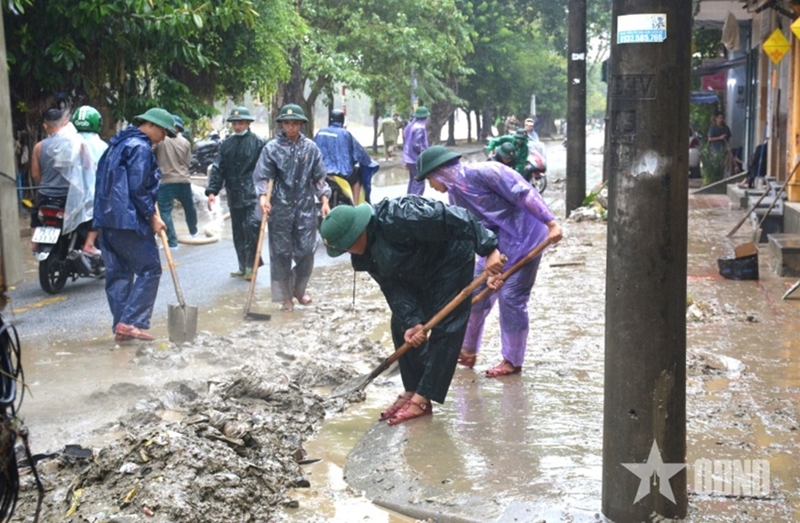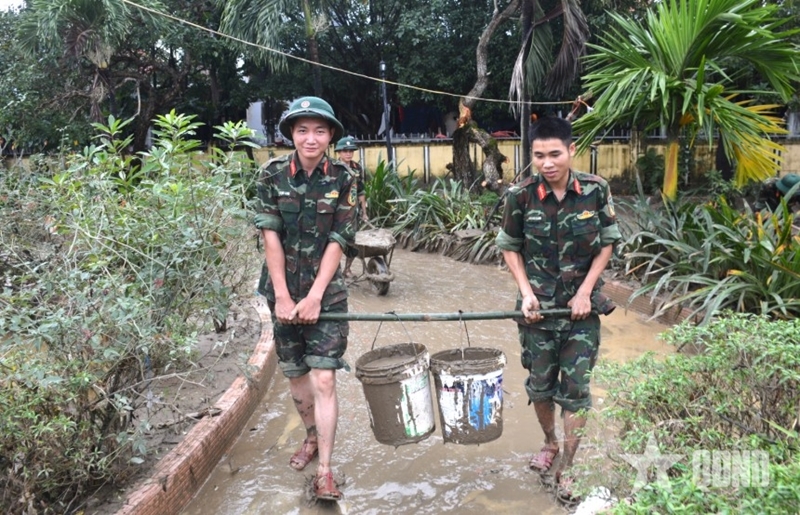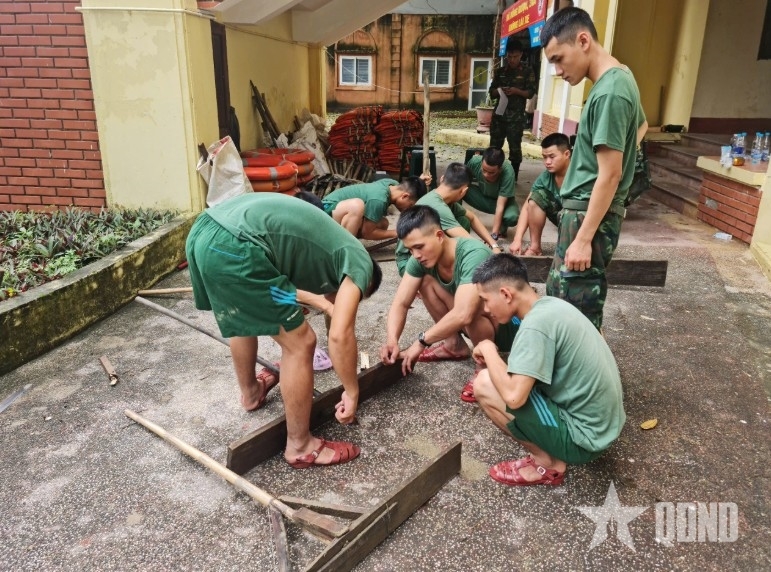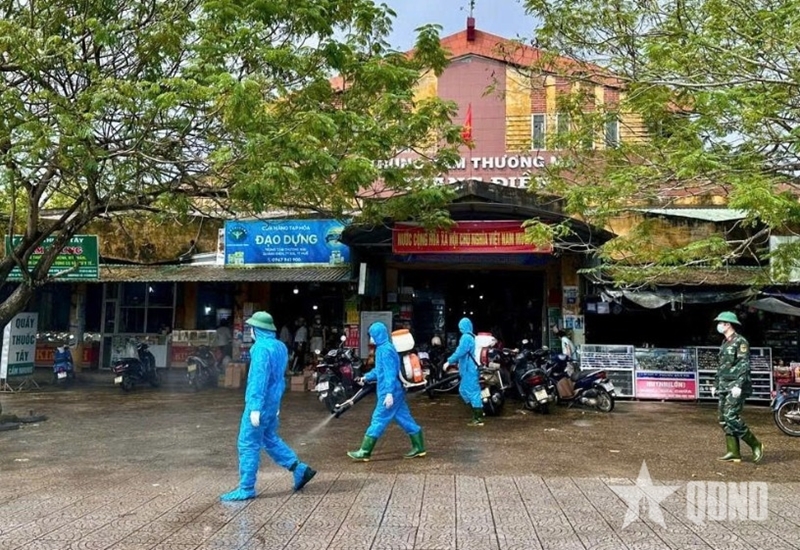Determined to help locals recover
Early Sunday morning, the city was still damp after days under floodwater. By 4 a.m., troops had already been awake and preparing tools and supplies. At 6 a.m., working teams set out in different directions. While major streets were mostly cleared, alleys and low-lying areas remained full of mud and debris. On Ung Binh street, Vy Da ward, soldiers tirelessly shoveled thick layers of mud and waste despite the stench.
    |
 |
|
Division 968’s troops work in the rain to clean up main roads in Hue city. |
Drenched in sweat and rain, Corporal Nguyen Van Thanh from Squad 1, Reconnaissance Platoon, Company 20, shared, “It is tiring, but knowing that we can help people get their homes cleaned up and roads cleared makes me feel at ease.”
At the War Cemetery of Thuy Van ward (now Vy Da ward), near the Nhu Y River, nearly 100 soldiers from Division 968 cleaned thick mud, some layers up to 20 cm deep, using whatever tools they could find. Each tomb was carefully wiped, showing deep gratitude to fallen heroes.
Witnessing troops work in rain, local resident Le Van Hoang said emotionally that the soldiers worked so hard for them. “Without them, the mud and garbage would still be everywhere,” he said.
    |
 |
|
Division 968’s troops make use of available materials to transport mud and debris. |
Colonel Le Khac Ngoc Anh, Deputy Political Chief of Division 968, said, “We have no days off while helping flood-hit residents, but we work scientifically to ensure both safety and effectiveness. Our biggest goal is to help people restore normal life and the environment.”
By nightfall, the roads and war cemetery were clean again. Division 968’s troops wrapped up a meaningful Sunday after cleaning three schools, one war cemetery, one pagoda, and nearly 15 km of roads, removing about 75 cubic meters of mud and 70 cubic meters of waste.
Efforts to restore sanitation, prevent disease
Between October 27 and 31, prolonged heavy rain caused flooding in many parts of Hue city, raising the risk of infectious diseases such as dengue fever, hand-foot-mouth disease, diarrhea, and respiratory and skin infections while posing risks of water and food contamination. After the water receded, local medical establishments quickly mobilized forces and vehicles to disinfect and clean the environment.
    |
 |
|
Soldiers use their lunch break to repair tools in preparation for the next cleanup shift. |
According to the Hue Center for Disease Control (CDC), the floods affected 284 schools, 88 markets, 561 residential quarters, and nearly 129,000 households. The CDC launched inspections, disinfection, and public health campaigns. By November 2, it had completed sanitation and sterilization in 266 schools, 75 markets, and residential areas, while promptly treating 10 dengue fever cases to prevent the disease outbreak.
However, as of the afternoon of November 2, heavy rain continued, river levels were rising, and some areas still had uncollected mud, garbage, and animal carcasses, posing a risk of pollution and disease.
    |
 |
|
Hue CDC’s staff disinfect the environment at Quang Dien Trade Center. |
Hue CDC’s Deputy Director Dr. Nguyen Le Tam said the center had received support from the Department of Preventive Medicine under the Ministry of Health and the Pasteur Institute’s Nha Trang branch, including 2 tons of Cloramin B powder and 200 liters of solution for disinfection. Three rapid-response teams were also set up to assist local health centers in sanitation and epidemic prevention efforts, helping residents return to normal life soon.
Translated by Mai Huong